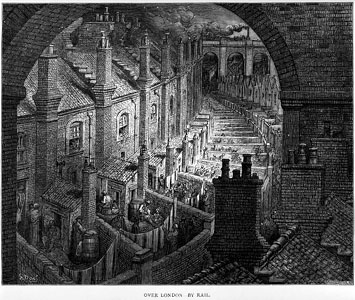Brecth is apparently really good at portraying his own ideas about the process of theater, even when the issue isn't directly addressed in the script. As I was reading the play, I knew nothing about Bretch's ideology, but I couldn't picture the play taking place anywhere but on a stage. When I read Waiting for Godot, I imagined the country road. When I read Big Love, I imagined the big Italian terrace. When reading 3 Penny Opera, I imagined a middle school drama club set.
To that end, I started searching for images- but instead of looking for any sort of image, I limited myself to paintings and drawings. I felt that the set should be very "flat," so that, for example, if there were an awning on the outside of a storefront, it would probably just be a backdrop painted to look like there was an awning right there. At the very most it might be a few sheets of plywood painted to look as if they were made out of fabric.
I focused on images of streets, since that seemed like an important element of the play.







I also looked for some images that reminded me of the actual setting of the play- London about a hundred years ago or earlier. I found some great images that really captured the two sides of the city: the glamour and the squalor.


Finally, I found a few images of workshops. I pictured Peachum's Beggar's Emporium to be just like an old fashioned cobbler's- an old man working with his hands out front, right where his customers will see him when they come in.


While I wasn't sure that these images would translate very closely into the actual set, I liked the very 2D nature of them and knew that I could at least use them for inspiration.
No comments:
Post a Comment